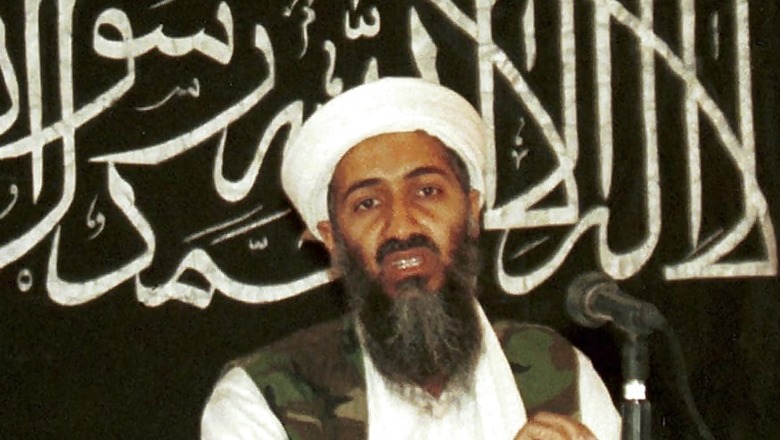
views
Did the US really find the then most wanted man in the world — Al Qaeda chief Osama Bin Laden – on its own or did the then Pakistan army chief Ashfaq Kayani divulge details about the dreaded terrorist?
Is it just a coincidence that Kayani held a secret meeting with US officials just two days before Laden was killed in a spectacular raid in Abbottabad, 150 km inside Pakistan territory?
Maybe America knew about Bin Laden’s whereabouts through a mole in the ISI or was it part of a US-Pakistan deal?
For the first time ex-ISI chief Asad Durrani spoke up about his information on the killing of Bin Laden. The statement is part of the conversation between Durrani and former RAW chief AS Dulat, which has been moderated by journalist Aditya Sinha in a book titled The Spy Chronicles: RAW, ISI and the Illusion of Peace.
In a chapter titled ‘The Deal for Osama bin Laden’, Durrani speaks at length on the subject, “How could Pakistan not know the US helicopters ingressing 150 km inside the country?... We are blamed for incompetence, for playing a double game; and what did we get in return? That is what I want to know.”
Durrani goes on to discuss allegations that the then Pakistani army chief gave away bin Laden’s location for a lot of money.
“Kayani was my favourite student at the NDC [National Defence Course]. Though retired, he is keeping away from me lest I ask if he made a deal…If Kayani settled for some farms or a billion dollars then I myself will start a campaign against him, who I once liked and feel was one of our thinking chiefs.”This is followed by a very interesting conversation between the two former top spies.
“Dulat: A couple of days before Osama was lifted, Kayani met with somebody, where was it?
Durrani: On a ship.
Dulat: Or at an airbase. There was a meeting which I thought significant in the context of what happened days later. Why did Kayani go to the meeting? Who was the US commander in Afghanistan then?
Durrani: In 2011? [David] Petraeus.
Dulat: It seemed like too much of a coincidence because two days later, Osama was bumped off.
Durrani: I agree, it’s a reasonable deduction that these meetings concerned the raid.”
In a well-documented footnote on this meeting, journalist Aditya Sinha, who has moderated and compiled conversations in this book, notes ‘Kayani met
1. Centcom [United States Central Command] chief General James Mattis on April 8.
2. Chairman of the Joint Chiefs of Staff Admiral Mike Mullen on April 20.
3. US commander for Afghanistan General David Petraeus on April 26.
On April 29, Oba signed the order for the raid on Osama bin Laden. On May 2 he was shot dead.
The conversation resumes on the role of the doctor who was allegedly working for the US, in the garb of a polio vaccinator, found out about Osama’s whereabouts, and on the CIA mole within ISI.
“Dulat: What was the role of the doctor who’s locked up?
Durrani: Under the cover of a polio programme he found where Osama bin Laden was.
Dulat: So he was working for the Americans. It seems to me that the Americans found Osama via the doctor, and told Kayani that now we know. Are you willing to cooperate or should we do it on our own?
Durrani: Yes, they said play ball. Kayani says, we will do it in this manner, and what do we get in return. They found out not only because of Dr Afridi [the polio vaccine doctor]. I have no doubt that a retired Pakistani officer who was in intelligence walked in and told the Americans. I won’t take his name because I can’t prove it and also I don’t want to give him any publicity. How much of the 50 million dollars he got, who knows. But he is missing from Pakistan. I should know.”
The noted journalist Seymour Hersh, in his book ‘The Killing of Osama Bin Laden’ for the first time, suggested that the entire narrative about the killing of the then chief of Al Qaeda was “a blatant lie”.
According to Hersh, in August 2010 a former senior Pakistani intelligence officer approached Jonathan Bank, then the CIA’s station chief at the US embassy in Islamabad, and offered to share the whereabouts of bin Laden in return for the reward that Washington had offered in 2001 — $25 million.
After the CIA confirmed that the Pakistani intelligence officer was telling the truth, Hersh says, negotiations between Pasha and the Central Intelligence Agency began. The intelligence officer and his family were relocated to America, where, according to Hersh, he now works for the CIA as a consultant.
In an interview to CNN, Hersh claimed that the informant was paid $20 million of the $25 million bounty offered by the US and is right now living in the US with his family, and works as a consultant for the CIA.




















Comments
0 comment